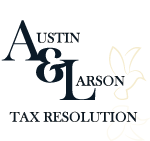Tax season can be stressful, but what happens when you owe more than you can afford? Tax debt – unpaid taxes, penalties, and interest – can be a daunting situation. Fear not, fellow taxpayer! While the IRS doesn’t exactly “forgive” tax debt, they offer several options to help you resolve it. From flexible payment plans to potential debt reduction, this guide will explore your avenues for tackling tax debt and getting back on solid financial ground.

Understanding Your Tax Debt
Tax debt – those three words can send shivers down even the most financially savvy spine. But before you panic, let’s break down what exactly tax debt is and how it can arise.
What is Tax Debt?
Think of tax debt as a snowball rolling downhill, gathering momentum and size as it goes. It starts with unpaid taxes you owe the IRS. These can be federal income taxes, self-employment taxes, or even payroll taxes you forgot to withhold. On top of this initial amount, penalties and interest start to accrue. Penalties are like late fees, tacked on for each month your tax bill remains unpaid. Interest, well, it’s just like any other debt – the longer it sits, the more you owe. This can quickly turn a manageable tax bill into a mountain of financial stress.
How Does Tax Debt Happen?
There are several ways you might find yourself facing tax debt. Here are some common culprits:
- Filing Errors: Sometimes, mistakes happen. Whether it’s a simple math error or a misunderstanding of tax deductions, an inaccurate tax return can lead to an unexpected tax bill.
- Underpayment: Did you underestimate your income or forget to factor in side hustles? This can lead to underpayment throughout the year, resulting in a tax debt come filing season.
- Unexpected Tax Liability: Life throws curveballs, and sometimes those curveballs come in the form of unexpected tax liabilities. Maybe you received a large inheritance you didn’t anticipate the tax implications of, or perhaps you sold an investment and owe capital gains tax. These unforeseen circumstances can leave you with a surprise tax debt.
The Price of Ignoring Tax Debt
Leaving tax debt unaddressed is a recipe for financial disaster. The IRS has a whole arsenal of tools at their disposal to collect what you owe, and these tools are not fun. Here’s what you might face:
- Wage Garnishment: Say goodbye to a portion of your paycheck. The IRS can legally garnish your wages to collect outstanding tax debt.
- Tax Liens: This puts a legal claim on your property, essentially making it difficult to sell or refinance your home or other assets.
- Bank Levies: The IRS can freeze and seize funds in your bank accounts to pay off your tax debt.
- Audits: Ignoring a tax debt significantly increases your chances of getting audited by the IRS, which can be a lengthy and stressful process.
Don’t let tax debt drown you! The good news is, there are options available to help you get back on track. We’ll explore those solutions in the next section.

IRS Solutions for Tackling Your Debt
Okay, tax debt is a reality you’re facing. But before you resign yourself to a life of ramen noodles and tax collector visits, take a deep breath! The IRS actually offers several options designed to help you resolve your tax debt and get back on solid financial ground. Let’s explore these options and see which one might be the right fit for you.
Spreading it Out: Payment Plans
Feeling overwhelmed by the total amount owed? Consider an installment agreement, also known as a payment plan. This allows you to break down your tax debt into smaller, more manageable monthly payments. Here’s the breakdown:
- Short-Term Payment Plans: Ideal for taxpayers who owe less than $100,000 (combined tax, penalties, and interest) and can pay it off within 180 days or less. Apply online for a quick and easy solution.
- Long-Term Payment Plans: For larger tax debts or those needing more time to repay, long-term plans offer monthly installments stretched out over several years. Eligibility usually hinges on owing less than $50,000 and demonstrating a steady income stream that can support the payments.
Benefits of Payment Plans
- Avoid Further Penalties and Collections Action: By entering a payment plan, you can prevent additional penalties from accruing and halt IRS collection efforts like wage garnishment or bank levies.
- Peace of Mind: Knowing you have a structured plan in place can significantly reduce stress and anxiety associated with tax debt.
Remember: There are eligibility requirements for payment plans, and the IRS considers your income, assets, and ability to repay when determining approval. Don’t hesitate to contact the IRS directly for further details on qualification criteria.
Temporary Relief: Currently Not Collectible (CNC) Status
Facing a genuine financial hardship that makes paying your tax debt impossible right now? The IRS might be able to offer some temporary relief through a Currently Not Collectible (CNC) designation.
What is CNC?
CNC status essentially puts a pause on IRS collection efforts. However, it’s important to understand that this is not debt forgiveness. The tax debt remains on your account, and interest continues to accrue. This designation is intended as a temporary solution to allow you to get your financial house in order.
Who Qualifies for CNC?
The IRS considers various factors when evaluating CNC eligibility, including your current income, expenses, and overall financial situation. Generally, taxpayers experiencing severe financial hardship may qualify for CNC status.
Limitations of CNC
While CNC offers a temporary reprieve, it’s crucial to remember it doesn’t erase your debt. The IRS will revisit your financial situation periodically, and if your circumstances improve, they will resume collection efforts. Additionally, remaining in CNC status for an extended period can negatively impact your credit score.
Reducing the Bill: Penalty Relief
Sometimes, life throws curveballs, and you might miss a filing deadline or payment due date. In these cases, you might be eligible for penalty relief from the IRS.
When is Penalty Relief Available?
The IRS considers “reasonable cause” when evaluating penalty relief requests. This could include unexpected medical emergencies, natural disasters impacting your ability to file, or even errors made by your tax preparer (with proper documentation). The recent COVID-19 pandemic also prompted the IRS to offer broader penalty relief for tax years 2020 and 2021, so be sure to check the IRS website for specific criteria.
Reducing the Sting of Penalties
Penalty relief can significantly decrease your overall tax debt by eliminating late filing and late payment penalties. This can free up additional funds to put towards your actual tax liability.
A Fresh Start: Offer in Compromise (OIC)
For taxpayers facing a significant tax burden they simply cannot afford to repay in full, the Offer in Compromise (OIC) program might be a viable option. This program allows you to settle your tax debt for a lump sum payment or through periodic installments that’s significantly less than the amount owed.
Qualifying for an OIC
The IRS considers several factors when evaluating OIC eligibility, including your current income and assets, future earning potential, and the likelihood of full payment if a plan is established. Additionally, you must demonstrate financial hardship and inability to pay the full tax debt.
OIC Options
- Lump Sum Offer: This involves paying a one-time, upfront payment to settle your tax debt.
- Periodic Payment Offer: This allows you to spread out the settlement amount over a defined period.
Remember: An OIC is not a guaranteed solution. The IRS carefully evaluates each offer and has the final say on whether to accept or reject it.

Choosing the Right Tax Debt Solution
While the term “forgiveness” might sound appealing, it’s important to understand that the IRS doesn’t typically erase tax debt entirely. However, they do offer several alternative solutions that can significantly ease your burden. Let’s compare and contrast some key options to help you choose the right path forward.
Debt Reduction vs. Manageable Payments: OIC vs. Payment Plans
- Offer in Compromise (OIC): This program allows you to potentially settle your debt for “less than full payment.” This can be a great option if you demonstrably cannot afford to repay the full amount owed. However, qualifying for an OIC can be challenging, and approval is not guaranteed.
- Payment Plans: Opting for a payment plan allows you to break down your tax debt into manageable monthly installments. This is a good choice if you can realistically repay the full amount over time, but the total debt might still feel overwhelming. Additionally, interest continues to accrue on the outstanding balance.
Temporary Relief vs. Permanent Settlement: CNC vs. OIC
- Currently Not Collectible (CNC): This designation offers a temporary pause on IRS collection efforts due to financial hardship. While it provides immediate relief, it’s not a permanent solution. The debt remains on your account, and interest continues to accumulate. Additionally, the IRS will reassess your situation periodically.
- Offer in Compromise (OIC): If approved, an OIC offers a permanent settlement of your tax debt for a negotiated amount. This eliminates the original debt and prevents future interest from accruing. However, qualifying for an OIC can be a complex process, and it might take longer to achieve than securing a CNC designation.
Exploring Alternatives Outside the IRS
While the IRS offers various solutions, there might be situations where their options aren’t the best fit. Here are a couple of alternatives to consider:
- Tax Relief Firms: These companies specialize in negotiating with the IRS on your behalf. However, their services come at a cost, so carefully weigh the fees against the potential benefits.
- Bankruptcy: In extreme financial hardship scenarios, filing for bankruptcy might be an option. However, this is a complex legal process with significant consequences, so consulting with a qualified bankruptcy attorney is crucial.
Taking Action is Key
Remember, ignoring tax debt will only make the situation worse. The IRS offers a range of solutions to help you manage your tax burden. By understanding these options and their limitations, you can choose the best course of action for your specific financial situation. Don’t hesitate to reach out to a qualified tax professional for personalized guidance in navigating your tax debt and finding the path to financial recovery.

Picking the Perfect Tax Debt Solution
With a toolbox full of IRS options at your disposal, choosing the right path to tackle your tax debt can feel overwhelming. But fear not! Here’s how to navigate this decision-making process:
Know Your Numbers
The first step is to get a clear picture of your financial situation. Gather documents like recent pay stubs, bank statements, and asset information. This will help you determine your ability to make regular payments, explore potential lump sum options for an OIC, and demonstrate financial hardship for CNC consideration.
Consider Your Debt
Evaluate the total amount of tax debt you owe, including penalties and interest. This will help you assess the feasibility of different options. For instance, a smaller debt might be manageable with a payment plan, while a larger sum could make an OIC more attractive.
Think Long-Term
Consider your future financial outlook. Can you realistically manage consistent monthly payments for a payment plan? Do you anticipate a significant change in income that might make an OIC more achievable in the future? Taking a long-term view will help you choose a solution that sets you up for sustainable financial recovery.
Seek Professional Help
Tax debt is a complex issue, and navigating the available options can be tricky. Don’t hesitate to seek guidance from a qualified tax professional. They can analyze your specific situation, recommend the most suitable IRS program, and even help you navigate the application process.
Free Resources at Your Fingertips
The IRS website is a treasure trove of information on tax debt solutions. Utilize their online resources to educate yourself on payment plans, OIC eligibility requirements, and other relevant details. Remember, knowledge is power!
By taking a proactive approach, understanding your options, and seeking professional help when needed, you can choose the best course of action to tackle your tax debt and move towards a brighter financial future.
Conclusion
Tax debt doesn’t have to be a life sentence. While the IRS doesn’t typically “forgive” debt, they offer a variety of solutions to help you manage and eventually resolve it. From flexible payment plans to potential debt reduction through an OIC, the best option depends on your unique financial situation. Remember, seeking guidance from a qualified tax professional can be invaluable in navigating these solutions and choosing the right path for you. Don’t let tax debt snowball – take action today and get back on track towards financial freedom!


Recent Comments